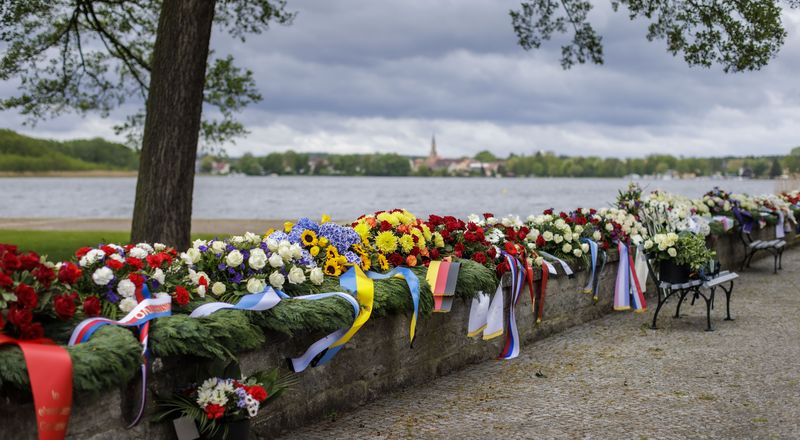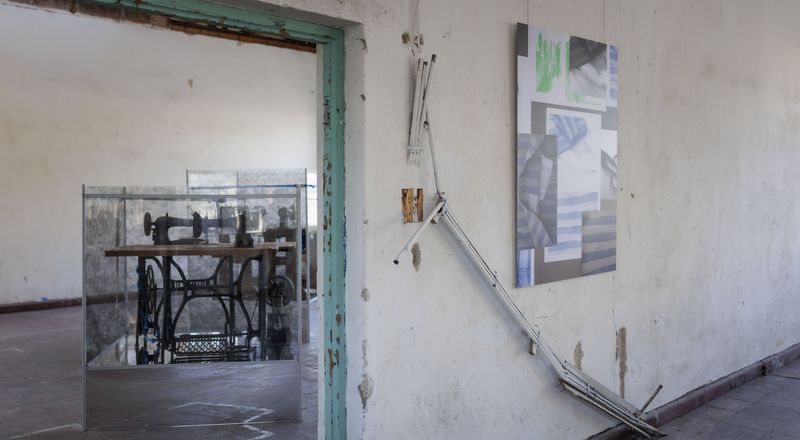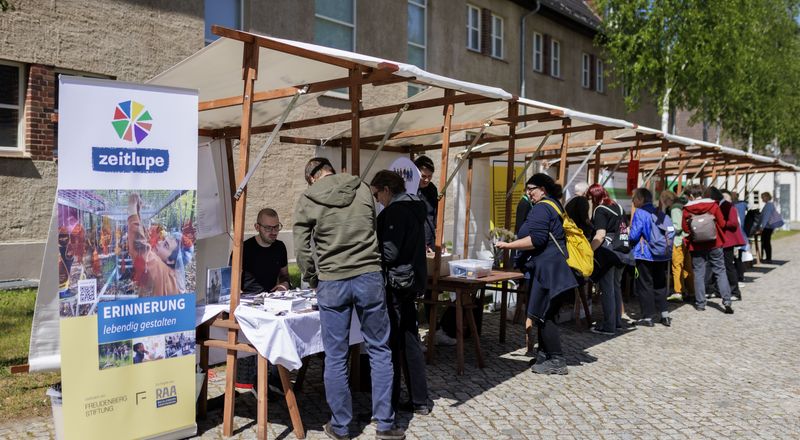The Anniversary of the Liberation at the Ravensbrück Memorial Museum
Each year, around the historical date of the liberation of Ravensbrück Concentration Camp by the Red Army on April 30, 1945, the Ravensbrück Memorial Museum holds a commemorative weekend marking the anniversary of the camp’s liberation. This annual remembrance is organized jointly by the Ravensbrück Memorial Museum and the International Ravensbrück Committee.
At the heart of the commemorations stands the central memorial ceremony, featuring speeches by survivors of the concentration camp and representatives of regional and federal government. A wreath-laying ceremony at the banks of Lake Schwedtsee follows the official event. The entire weekend is accompanied by a program of events including exhibition openings, guided tours, readings, and other commemorative activities.
Looking Back: The 80th Anniversary of the Liberation of Ravensbrück
From May 1 to 4, 2025, we commemorated the 80th anniversary of the liberation of the Ravensbrück Women's Concentration Camp together with more than 1,500 people from across the globe. During these days, the Memorial became a place of encounter, reflection, and active engagement with history.
We are deeply grateful to the survivors, their families, and all those who helped shape this multifaceted and moving commemoration through their presence and contributions. The voices and memories of former prisoners were central to the events. They emphasized the imperative of historical responsibility:
“None of us here is responsible for the crimes committed by the Nazis back then. But we are all responsible for ensuring that something like this never happens again. Today, this is more important than at any time in the past 80 years.”
– Ingelore Prochnow, born in the camp in 1944, in her speech at the central ceremony on May 4.
The ceremony was broadcast live on rbb television. A full recording is available in the rbb media library: Watch the recording of the central ceremony →
Speeches:
- Dr. Andrea Genest, Director of the Ravensbrück Memorial Museum
- Ambra Laurenzi, President of the International Ravensbrück Committee
- Claudia Roth, Federal Government Commissioner for Culture and the Media
- Tobias Dünow, State Secretary, Ministry of Science, Research and Culture, Brandenburg
- Hanna Wróblewska, Minister of Culture and National Heritage, Republic of Poland
- Ingelore Prochnow, survivor of the Ravensbrück Concentration Camp
We sincerely thank everyone who contributed to this significant anniversary, whether through speeches, musical contributions, organization, or work behind the scenes!
Historical Background
Shortly before the end of the war, the International, Swedish, and Danish Red Cross evacuated around 7,500 prisoners to Sweden, Switzerland, and France. Due to an evacuation order, the remaining 20,000 prisoners were forced into marching columns heading northwest. Many died on these death marches. On April 30, 1945, the Red Army liberated the Ravensbrück concentration camp and the approximately 3,000 sick prisoners who had been left behind.
However, liberation did not mark the end of suffering for many women, men, and children. Many of them died in the weeks, months, and years that followed. The survivors often suffered for decades from the consequences of their imprisonment in the concentration camp.
After the liberation, the Soviet army took over large parts of the former concentration camp. Since 1948, former prisoners and the Association of Persecutees of the Nazi Regime have worked to preserve at least the area around the crematorium and to transform it into a place of remembrance. The first memorial ceremony took place there in September 1948. Such commemorations have been held annually ever since and continue to provide a space for encounter, remembrance, and exchange.








